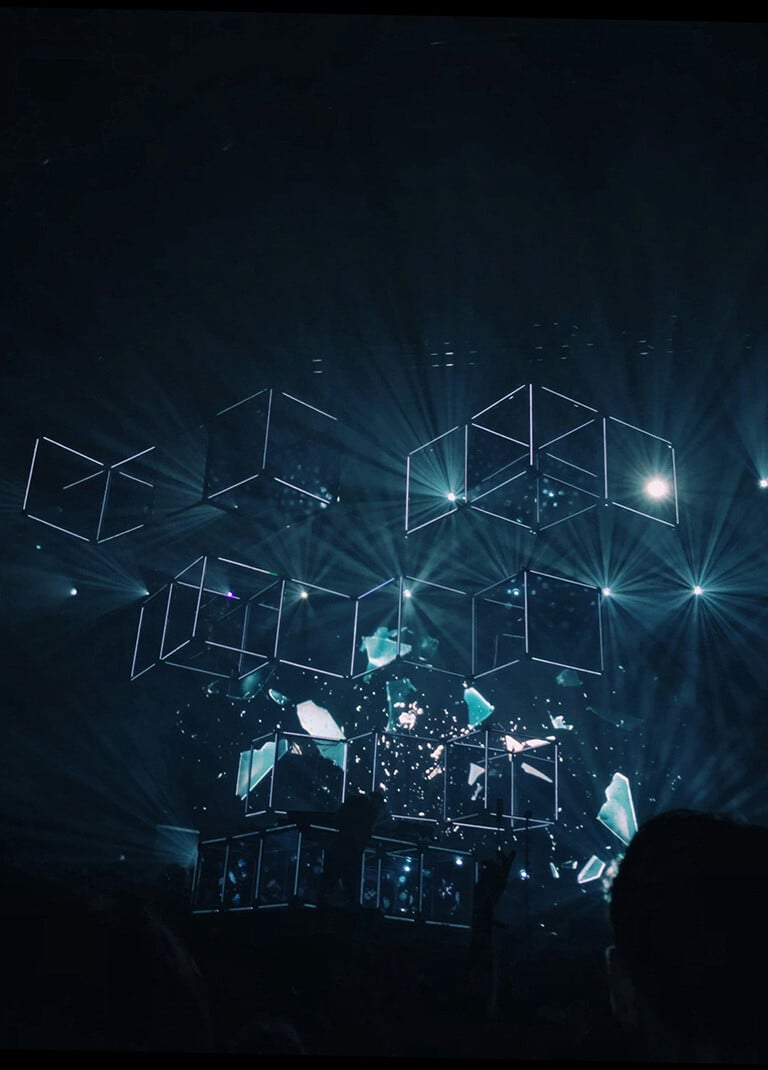Unless you work in the IT sector you might not give data centers a second thought, but the chances are you rely on them almost every waking hour of your day.
From streaming TikTok and YouTube videos to texting and instant messaging friends and family to taking Zoom work calls to shopping, banking, and other business activities to listening to music and podcasts to streaming your favorite shows nightly – we live in a digital world powered by the servers, routers, switches, cables and other infrastructure housed in data centers.
These vast networking, storage, and computing resources are strung across some 11,000 data centers around the globe with nearly half of them in the United States. And our voracious appetite for all things digital has ramped up the data center demand for energy – increasing an electrifying 55 percent from 2022 (4.9 Gigawatts) to 2023 (7.4 Gigawatts).
To wrap your mind around a Gigawatt: A power plant with a 1 Gigawatt capacity could power almost a million households yearly. Some estimate that data centers account for approximately 3 percent of global energy consumption and 1+ percent of greenhouse gas emissions, and those rates are rising.
“Digital infrastructure has become a vital part of modern society, enabling us to communicate, work, and socialize on a scale never seen before. However, this growth has come with significant environmental costs, and data centers are increasingly being recognized as major contributors to greenhouse gas emissions and other forms of pollution due to their significant energy consumption, high water usage, and generation of electronic waste,” says a paper published July 2023 in Energies.
Charting a Course Towards Data Center Sustainability
To chart a course toward sustainability, data center designers must prioritize energy efficiency and renewable energy.
From optimizing cooling systems to implementing advanced power management techniques, every aspect of design holds the potential for reducing energy consumption and enhancing operational efficiency.
Furthermore, the integration of renewable energy sources emerges as a cornerstone of sustainable data center design. By harnessing solar, wind, or hydroelectric power, data centers can transition towards a greener future while mitigating their environmental footprint.
“A sustainable data center is one that minimizes its environmental impact while still providing reliable and secure data processing and storage services. It involves prioritizing energy efficiency, utilizing renewable energy, conserving water, and reducing waste,” explains Meta, one of the companies that relies on massive data centers to run its business.
The pursuit of sustainability in data center design aligns with broader corporate ambitions for a carbon-neutral future.
“Most businesses want their buildings, even data centers, to be "net zero" by 2050, which means they source all energy from renewable sources with zero addition of CO2 to the atmosphere,” says TechTarget. “Achieving net zero requires a three-pronged data center design approach: energy conservation, energy efficiency, and renewable, preferably on-site energy sources.”
Energy Inefficiency in Data Centers
Data centers, while indispensable to the digital infrastructure, often grapple with significant energy inefficiencies. These inefficiencies stem from various factors, including underutilization of servers, inadequacies in cooling and ventilation systems, and inefficient infrastructure design.
- Server Utilization: One of the primary contributors to energy inefficiency in data centers is the underutilization of servers. Many servers operate at a fraction of their capacity, leading to wasted energy resources. Despite advancements in virtualization technology, which allow for better resource allocation, server utilization rates often remain suboptimal.
- Cooling and Ventilation: Data centers generate substantial heat due to the continuous operation of servers and networking equipment. To maintain optimal operating conditions, data centers rely on cooling and ventilation systems, which consume significant amounts of energy. Inefficient cooling mechanisms, coupled with poor airflow management, exacerbate energy consumption and contribute to overall inefficiency.
- Inefficient Infrastructure: The design and layout of data center infrastructure also play a crucial role in energy efficiency. Inefficient power distribution systems, outdated equipment, and subpar insulation can result in energy losses and increased operational costs. Moreover, legacy infrastructure often lacks the scalability and adaptability needed to accommodate evolving technological demands.
Importance of Energy Efficiency in Data Centers
From cost reduction to reducing the carbon footprint, there are compelling reasons for data centers to prioritize energy efficiency:
- Cost Reduction: Improving energy efficiency translates to lower operational expenses for data center operators. By optimizing resource utilization and implementing energy-efficient technologies, organizations can significantly reduce their electricity bills and overall operating costs.
- Extended Equipment Lifespan: Enhanced energy efficiency contributes to the longevity of data center equipment. By minimizing thermal stress and reducing component wear, efficient operation prolongs the lifespan of servers, networking devices, and cooling systems, thereby lowering maintenance and replacement costs.
- Scalability: Energy-efficient data center designs are inherently more scalable and adaptable to changing workloads and technological advancements. By optimizing resource utilization and minimizing energy wastage, organizations can seamlessly expand their infrastructure without incurring disproportionate increases in energy consumption.
- Reduced Carbon Footprint: Energy-efficient data centers contribute to environmental sustainability by reducing greenhouse gas emissions and mitigating environmental impact. By embracing renewable energy sources and implementing energy-efficient practices, organizations can shrink their carbon footprint and demonstrate a commitment to environmental stewardship.
- Improved Reputation: Demonstrating a commitment to energy efficiency enhances an organization's reputation and corporate social responsibility (CSR) credentials. Stakeholders, including customers, investors, and regulatory bodies, increasingly value sustainable business practices and environmental consciousness.
- Improved Reliability: Energy-efficient data centers tend to exhibit higher levels of reliability and uptime. By minimizing thermal fluctuations and optimizing cooling systems, organizations can enhance the stability and resilience of their infrastructure, thereby reducing the risk of downtime and service disruptions.
- Regulatory Compliance: Adhering to energy efficiency standards and regulatory requirements is essential for data center operators. By embracing energy-efficient practices and complying with relevant regulations, organizations can mitigate compliance risks and avoid potential penalties and sanctions.
By addressing energy inefficiencies and embracing sustainable practices, organizations can unlock a myriad of benefits while advancing toward a greener and more resilient digital future.
Data Center Energy Efficiency Strategies
Data Centers have a vast array of strategies that can be employed to achieve energy efficiency starting with energy-efficient design and layout.
Implementing energy-efficient design principles, such as modular architecture, efficient power distribution, and optimized airflow pathways, can minimize energy losses and improve overall performance.
Additionally, adopting innovative cooling technologies, such as liquid cooling and rear-door heat exchangers, enhances thermal management while reducing energy consumption.
It’s a strategy that Meta uses with the company saying “our data centers incorporate energy-efficient hardware designs as well as cooling systems that use outdoor air and direct evaporative cooling to save both energy and water. Helpful too are building sites uniquely designed to promote their location’s biodiversity, incorporating native plants and adaptive landscapes that mimic the natural hydrology and help reduce urban heat island effect.”
Energy efficiency strategies that data centers can employ include:
- Virtualization: Virtualization technology enables data centers to maximize server utilization by running multiple virtual machines on a single physical server. By consolidating workloads and minimizing idle resources, virtualization reduces energy waste and enhances overall efficiency.
- Energy-Efficient Hardware: Investing in energy-efficient servers, storage devices, and networking equipment can significantly reduce power consumption within data centers. Energy Star-certified hardware and components with advanced power management features help minimize energy overhead while maintaining performance and reliability.
- Efficient Cooling Systems: Cooling accounts for a significant portion of data center energy consumption. Adopting efficient cooling systems, such as precision air conditioning and hot/cold aisle containment, helps maintain optimal temperatures while minimizing energy usage. Additionally, implementing airflow management strategies and utilizing free cooling techniques, such as air-side economization, can further enhance cooling efficiency.
- Power Management Software: Deploying power management software enables data center operators to monitor, analyze, and optimize energy consumption in real time. These software solutions provide insights into energy usage patterns, identify inefficiencies, and enable proactive measures to optimize resource allocation and reduce wastage.
- Data Center Infrastructure Management (DCIM): DCIM solutions offer comprehensive visibility and control over data center infrastructure, facilitating informed decision-making and efficient resource management. By monitoring power usage, thermal conditions, and equipment health, DCIM platforms enable data center operators to identify optimization opportunities and enhance operational efficiency.
- Employee Training and Awareness: Educating data center staff on energy-efficient practices and promoting a culture of sustainability fosters collective responsibility and engagement. Training programs, awareness campaigns, and incentive schemes encourage employees to adopt energy-saving behaviors and contribute to the organization's sustainability goals.
TechTarget says that when data centers upgrade or remodel their infrastructure, there are plenty of energy-efficient choices.
“You can also find much more efficient computer processing hardware, UPS systems, and cooling equipment. "Energy Star"-rated servers significantly improve energy efficiency, especially when IT hardware runs close to maximum utilization,” advises TechTarget. “You can also shut down unused servers, replace older hardware with high-efficiency equipment, and make full use of energy efficiency features to help minimize idle state power consumption. Consolidation and virtualization also improve hardware efficiency.”
Integration of Renewable Energy Sources
One of the most impactful strategies for sustainable data centers is the integration of renewable energy sources into their energy supply mix.
By harnessing clean, renewable resources such as solar, wind, and hydroelectric power, data centers can reduce their dependence on fossil fuels and minimize their carbon footprint.
Several approaches to integrating renewable energy into data center operations include:
- On-Site Renewable Energy Generation: Installing solar panels, wind turbines, or hydroelectric generators on-site allows data centers to produce renewable energy locally. By generating electricity from renewable sources directly at the facility, data centers can offset a significant portion of their conventional energy consumption and reduce reliance on the grid.
- Power Purchase Agreements (PPAs): Data centers can enter into long-term agreements with renewable energy developers to purchase electricity generated from renewable sources. PPAs provide a stable and predictable source of renewable energy, often at competitive prices, while supporting the growth of renewable energy infrastructure.
- Renewable Energy Credits (RECs): Purchasing RECs allows data centers to financially support renewable energy projects and offset their carbon emissions. RECs represent the environmental attributes of renewable energy generation and can be purchased separately from electricity consumption, enabling data centers to claim carbon neutrality and support renewable energy development.
- Microgrids and Energy Storage: Implementing microgrid systems and energy storage solutions enhances the resilience and reliability of data center operations while integrating renewable energy sources. By combining renewable energy generation with energy storage technologies such as batteries or flywheels, data centers can store excess energy for use during peak demand periods or grid outages.
Can data centers flip the script and become a source of power? The Energy Council in Australia thinks so.
“Anyone with an overactive iPhone knows it can run hot. Rising demand for data centers creates an opportunity for the power-hungry facilities to supply heat to neighboring buildings and precincts,” says the Energy Council. “Advanced technologies, such as thermoelectric generators or organic Rankine cycle (ORC) systems, can convert waste heat directly into electricity. Data centers can employ such technologies to harness their waste heat for power generation.”
By embracing these renewable energy integration strategies, data centers can transition towards a more sustainable and environmentally friendly operational model while reducing their environmental impact and contributing to global efforts to combat climate change.










